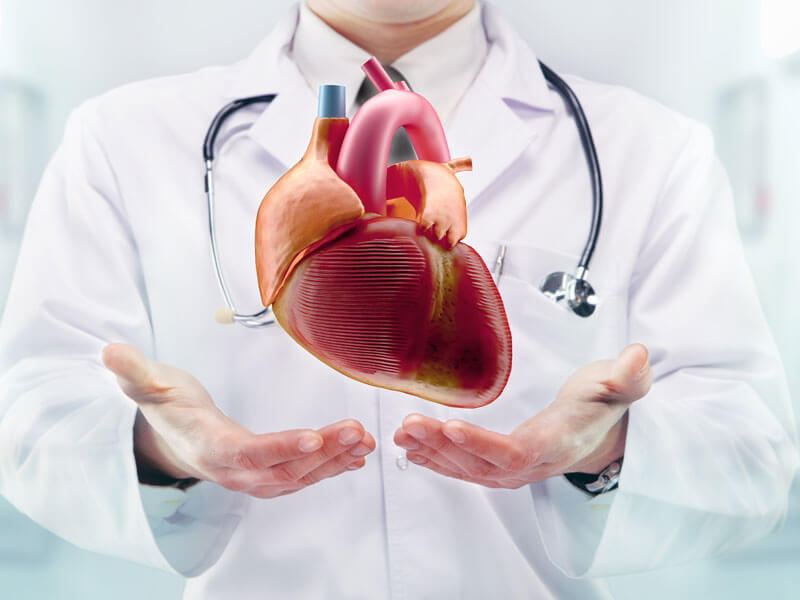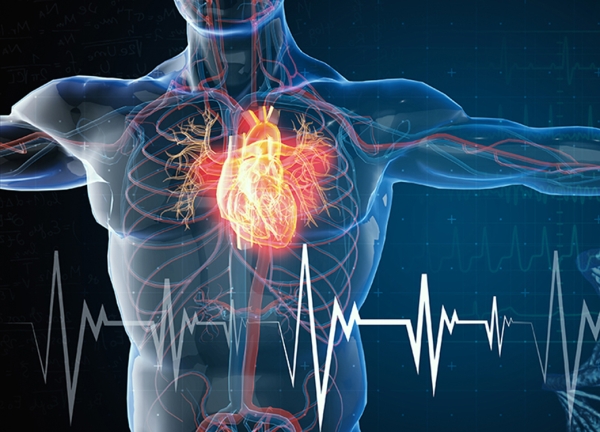Recognizing the Relevance of Cardiology in Modern Healthcare Services
Cardiology plays a critical role in modern healthcare, particularly as cardiovascular disease remains to be the leading reason for death worldwide. Breakthroughs in diagnostics and therapy have actually transformed client care, enabling earlier treatments and boosted end results. Moreover, the change towards preventive cardiology encourages people to manage their health proactively. As innovation continues to evolve, the assimilation of ingenious services may better redefine cardiology's influence on public health, motivating a better evaluation of emerging trends and their effects.
The Occurrence of Cardiovascular Disease and Its Influence On Public Health And Wellness
Although cardiovascular disease continues to be the leading cause of fatality internationally, its impact expands far past private patients to impact public health systems and economic situations. The high prevalence of heart problem places a considerable strain on health care sources, necessitating raised funding for rehab, avoidance, and treatment programs. Public health efforts should deal with risk variables such as weight problems, smoking cigarettes, and less active way of livings, which contribute considerably to the climbing incidence of heart conditions.Moreover, the economic concern linked with heart disease is enormous, including not just straight clinical expenses however additionally indirect expenditures associated with lost productivity and premature mortality. Neighborhoods encounter obstacles in taking care of these costs, frequently causing differences in medical care accessibility and end results. As the populace ages and lifestyle-related threats remain to rise, the necessity for reliable cardiology treatments comes to be paramount. Attending to heart illness is not only a matter of individual wellness yet likewise a vital public health and wellness priority.
Advances in Heart Diagnostics and Imaging Techniques
Current improvements in cardiac diagnostics and imaging techniques have actually reinvented the field of cardiology, enhancing the capacity to find and keep an eye on heart diseases. Strategies such as cardiac MRI, CT angiography, and echocardiography have come to be progressively sophisticated, giving in-depth pictures of heart frameworks and functions. These methods enable the very early identification of conditions like coronary artery illness, cardiac arrest, and valvular disorders.Moreover, innovations in non-invasive diagnostics, such as wearable innovation and remote monitoring tools, have empowered people and doctor. These devices help with real-time monitoring of heart rhythms and other crucial indications, bring about timely treatments. Additionally, expert system is being incorporated right into imaging analysis, enhancing accuracy and effectiveness in diagnosis.
Developments in Treatment Options for Heart Issues
Current developments in cardiology have actually resulted in considerable innovations in treatment alternatives for heart disease. These include sophisticated medical techniques that improve step-by-step end results and emerging medicines that supply new avenues for treatment. As the area evolves, these developments play a crucial duty in improving client treatment and end results.
Advanced Surgical Techniques
Technologies in surgical techniques have transformed the landscape of cardiology, using brand-new wish for patients with heart disease. Minimally invasive procedures, such as catheter-based interventions, have considerably lowered recuperation times and hospital stays. Techniques like robotic-assisted surgery enhance precision, allowing cosmetic surgeons to navigate complex anatomical structures with greater accuracy. Advancements in imaging technology facilitate real-time visualization throughout treatments, enhancing results. Transcatheter aortic valve replacement (TAVR) exhibits an innovation in dealing with aortic stenosis, enabling valve substitute without open-heart surgical treatment. Furthermore, hybrid methods that combine catheter-based and medical techniques provide customized remedies for different cardiac concerns. These innovative surgical techniques not just improve patient safety and security however also increase therapy options, emphasizing the essential function of innovation in modern-day cardiology methods.
Emerging Treatments and medicines
As the landscape of cardiology remains to progress, emerging treatments and medications play a crucial function in enhancing therapy options for heart problems. Innovations such as unique anticoagulants and advanced lipid-lowering representatives have actually transformed the monitoring of cardiovascular diseases, substantially minimizing client morbidity and death. Additionally, the growth of gene therapies and regenerative medication provides encouraging avenues for dealing with problems previously considered irreparable. Scientific trials are continuously disclosing the efficacy of these treatments, pressing the boundaries of standard therapies. Moreover, the combination of electronic health innovations assists in personalized medicine, enabling customized therapy plans based on genetic and way of life variables. Jointly, these innovations emphasize the vibrant nature of cardiology, improving patient outcomes and redefining requirements of care in contemporary health care.
The Function of Preventive Cardiology in Client Care
Precautionary cardiology plays a necessary duty in individual treatment by concentrating on the recognition of danger elements that contribute to heart problem. With lifestyle modification strategies and early discovery strategies, doctor can properly minimize the occurrence of cardiovascular events - Cardiology Jupiter. This proactive strategy not just enhances client outcomes yet additionally promotes long-term wellness
Danger Element Identification
While cardio illness stay a leading cause of morbidity and mortality worldwide, reliable danger element recognition acts as a cornerstone of preventive cardiology. Recognizing danger factors such as high blood pressure, hyperlipidemia, family members, and diabetic issues background is important for very early intervention. Medical care specialists make use of different evaluating techniques to evaluate these variables, allowing for customized safety nets. Furthermore, understanding an individual's way of living options, such as smoking cigarettes and physical inactivity, further notifies risk evaluations. This thorough examination makes it possible for clinicians to establish personalized care strategies intended at mitigating risks. By prioritizing threat factor identification, health care systems can boost patient results and minimize the total burden of heart diseases, inevitably contributing to improved public health and wellness approaches and source allocation.
Way Of Life Adjustment Approaches
A plethora of studies highlights the vital function of way of life alteration approaches in reducing heart disease danger. These strategies encompass dietary changes, increased physical activity, cigarette smoking cessation, and weight management. By adopting a heart-healthy diet rich in fruits, vegetables, entire grains, and lean healthy proteins, people can decrease cholesterol degrees and high blood pressure. Routine physical task enhances the heart and enhances overall cardiovascular health. Additionally, giving up smoking cigarettes substantially lowers the threat of heart problem and improves healing rates for those with existing problems. Weight administration additionally adds to cardiovascular wellness by minimizing various other risk factors such as diabetes mellitus and high blood pressure. Executing these lifestyle transforms not just promotes individual health however also functions as a foundation of precautionary cardiology in patient treatment.
Early Discovery Methods
Lifestyle alterations considerably add to lowering cardio disease threats, however they are most reliable when coupled with early discovery techniques. Preventative cardiology highlights the value of determining prospective heart issues before they escalate into serious conditions. Strategies such as high blood pressure tracking, cholesterol screening, and advanced imaging technologies like echocardiograms play vital roles in reviewing cardiovascular health and wellness. Biomarkers and genetic screening also improve the accuracy of early detection, permitting for tailored precautionary strategies. Routine heart risk examinations encourage healthcare carriers to intervene proactively, potentially protecting against cardiac arrest and strokes (Cardiologist near me). By integrating these early discovery approaches right into routine care, individuals can gain from timely lifestyle interventions and targeted therapies, inevitably improving and boosting end results quality of life
Integrating Technology Into Cardiology Practices
As improvements in modern technology remain to improve various fields, the integration of innovative tools and systems into cardiology methods has ended up being necessary for boosting person treatment and end results. Telemedicine systems allow cardiologists to monitor patients remotely, improving accessibility to care while reducing the burden on healthcare centers. Wearable tools, such as smartwatches, make it possible for continual heart price surveillance, informing both individuals and doctors to prospective issues in real-time. Additionally, artificial knowledge (AI) is being made use of to examine huge amounts of cardiac information, helping in early diagnosis and personalized therapy strategies. Advanced imaging methods, including 3D echocardiography, boost visualization of heart frameworks, bring about extra exact interventions. Digital wellness records (EHRs) streamline person info management, ensuring that cardiologists have instant access to crucial information. Together, these technical improvements official site are transforming cardiology, advertising aggressive administration and improved wellness outcomes for people with cardio problems.
The Significance of Client Education and Involvement
Person education and interaction play an essential role in the monitoring of cardiovascular wellness. By equipping individuals with expertise about their conditions, therapy options, and lifestyle modifications, doctor encourage people to take an active role in their treatment. This aggressive strategy can result in enhanced adherence to recommended drugs, nutritional changes, and exercise programs, eventually lowering the threat of complications.Engagement additionally fosters a strong patient-provider relationship, motivating open communication and depend on. When individuals really feel educated and entailed, they are extra likely to voice concerns and ask questions, which can lead to better medical results. Furthermore, academic resources, such as workshops or digital platforms, can enhance understanding and promote self-management strategies. Overall, focusing on person education and learning and involvement is essential for enhancing cardio wellness, boosting top quality of life, and minimizing health care expenses connected with heart diseases.
Future Fads in Cardiology and Their Prospective Effect

Frequently Asked Questions
What Way Of Living Modifications Can Decrease Heart Problem Threat?
The present question addresses way of living modifications that can greatly lower heart illness risk. Dr Garcia. Taking on a balanced diet regimen, taking part in regular exercise, maintaining a healthy and balanced weight, handling stress and anxiety, and preventing tobacco can significantly improve cardio health
Exactly How Can I Recognize Early Indicators of Heart Issues?
Identifying early you could check here indicators of heart problems this hyperlink includes surveillance signs such as upper body pain, lack of breath, exhaustion, and irregular heart beat. Prompt awareness of these signs can motivate necessary medical examination and treatment for far better outcomes.
What Are the Differences Between Cardiologists and Heart Surgeons?
The distinctions in between cardiologists and heart surgeons hinge on their functions; cardiologists mostly manage and diagnose heart disease with non-invasive approaches, while heart cosmetic surgeons do procedures to correct structural heart problems. Each plays a crucial, distinctive role.

How Often Should I Obtain My Heart Health And Wellness Checked?
The frequency of heart wellness checks differs based on specific danger factors. Usually, adults should undertake assessments each to two years, while those with status quo may call for more constant evaluations as suggested by health care professionals.
What Function Does Genetics Play in Cardiovascular Disease Risk?
Genes greatly affects cardiovascular disease threat, with familial patterns showing inherited problems. Specific genetics can incline individuals to high blood pressure, cholesterol issues, and various other cardio problems, highlighting the relevance of genetic screening in reviewing heart health and wellness. Heart condition remains the leading cause of fatality globally, its effect expands far beyond specific patients to impact public wellness systems and economies. Public health and wellness campaigns must deal with danger variables such as obesity, cigarette smoking, and less active lifestyles, which contribute considerably to the climbing occurrence of heart conditions.Moreover, the economic concern connected with heart condition is tremendous, encompassing not only direct medical expenses however additionally indirect expenditures connected to shed productivity and premature mortality. Precautionary cardiology plays a necessary duty in individual treatment by focusing on the identification of danger aspects that add to heart condition. Artificial intelligence (AI) and machine learning are enhancing diagnostics and client tracking, allowing early detection of heart diseases. The differences in between cardiologists and heart doctors exist in their duties; cardiologists largely handle and identify heart conditions through non-invasive methods, while heart doctors execute medical procedures to fix structural heart concerns.